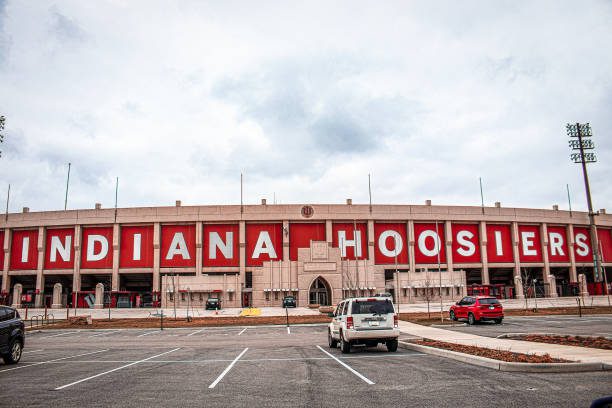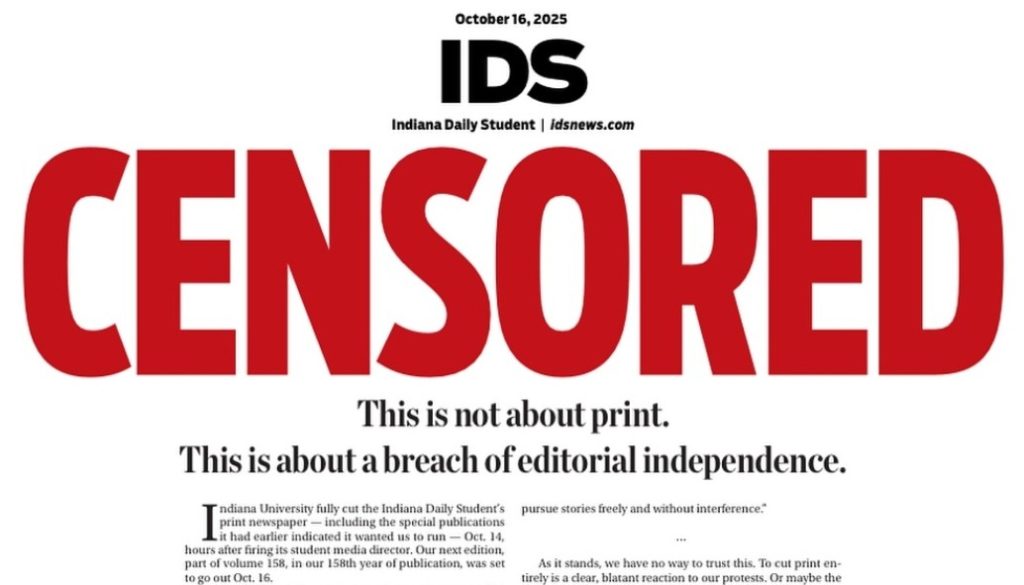
BLOOMINGTON, Ind. — As FOX’s cameras sweep across Memorial Stadium on Saturday morning, capturing the roar of the crowd and the crimson banners waving high, Indiana University is having its moment in the national spotlight. But just off the field, a very different story is unfolding — one that raises questions about whether free speech and press freedom still have a home in the Hoosier State.
While Indiana celebrates its football pride, the university’s own student journalists have been benched.

Just days before the weekend broadcast, Indiana University administrators fired Jim Rodenbush, the Director of Student Media at the Media School, after he refused to carry out an order that would have censored the Indiana Daily Student (IDS) newspaper. The directive, according to internal communications shared by the paper’s editors, told the students to publish “nothing but information about homecoming — no other news at all.”
Rodenbush called it what it was: censorship. “Any attempt on my end to censor or manipulate any content from a student media outlet is literally against the law,” he told his superiors before his termination. Within 24 hours of his firing, IU cut the paper’s print edition entirely — ending a 158-year-old tradition of student journalism on campus.
The university defended the decision as a “business shift” to digital media. But the Student Press Law Center and legal experts quickly rejected that justification, calling it a “blatant violation of First Amendment protections.” Students at IU say the administration’s decision followed recent reporting critical of university leadership, including coverage of free speech rankings and student activism.
For a university that once held up its journalism program as one of the nation’s best, the optics are hard to ignore: a football broadcast that celebrates school spirit while the student press is stripped of its voice.
The contrast wasn’t lost on the Big Ten community. Students at Purdue University’s Exponent newspaper stepped in to reprint and distribute the IDS’s censored issue themselves, driving copies from West Lafayette to Bloomington in an act of journalistic solidarity. “We student journalists must stand,” read the front page of that special issue.
At the same time that Indiana’s Media School silenced its paper, the campus football team became the face of the university’s national image — cheering crowds, marching bands, and corporate sponsors filling airtime that used to be shared with student voices. For some, that juxtaposition has become symbolic of a larger national trend: spectacle over substance, brand over truth.
Free expression isn’t supposed to depend on whether the topic fits neatly into a game-day broadcast. Yet at Indiana University this week, the scoreboard told one story while the newsroom told another.
And for the students who refused to be silenced — and for the rival school that helped them be heard — the real victory this weekend wasn’t on the field. It was in the pressroom, while the state funded school openly fumbles the rights of the students.




